Welcome to RVC Repository
RVC Research Online is a repository of the research outputs produced by staff from the Royal Veterinary College (RVC). The aims of the repository are (i) to provide an institutional archive of RVC's research outputs, (ii) to provide access to these outputs and support open science, and (iii) to increase the reach and impact of RVC's research.
